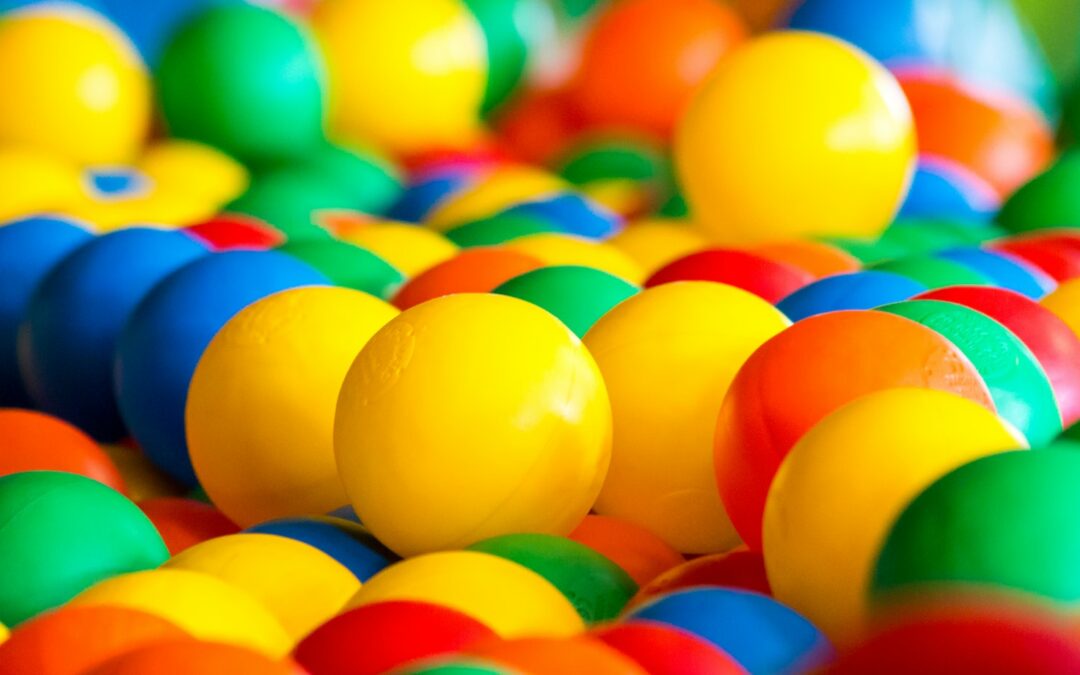Ball Pits for Toddlers
The benefits of ball pits for toddlers go beyond pure enjoyment. As kids dive into a sea of colorful balls, they enhance their motor skills by crawling or walking through the pit, reaching out to grab and throw balls, and even attempting to balance on top of them. The sensory experience of touching different textures and hearing the gentle sound of balls moving around also stimulates their senses.
Moreover, ball pits provide an opportunity for social interaction as toddlers can enjoy this playful experience with siblings or friends. They learn valuable lessons about sharing, taking turns, and collaborating while engaging in pretend play scenarios like building forts or having imaginary tea parties.
Safety Precautions to Consider
As parents, we always prioritize the safety and well-being of our little ones, especially when they’re having fun in ball pits for toddlers. While these colorful and exciting play areas can provide hours of entertainment, it’s essential to take some safety precautions into account to ensure a worry-free experience.
Ensuring Proper Supervision
One of the most critical aspects of keeping our children safe in ball pits is providing adequate supervision. Although these play areas are designed with safety in mind, accidents can still occur. Here are a few tips to help you maintain a watchful eye:
- Stay within arm’s reach: Always be close by and ready to assist your child if needed.
- Observe age restrictions: Make sure the ball pit is suitable for your toddler’s age group.
- Limit distractions: Avoid using smartphones or engaging in distracting conversations while supervising your child.
- Know the rules: Familiarize yourself with any posted rules or guidelines specific to the ball pit facility.
By following these simple steps, you can create a safe environment where your little one can freely enjoy their time without compromising their well-being.

Maintaining Hygiene Standards
Another crucial aspect when it comes to ball pits for toddlers is maintaining proper hygiene standards. With multiple children playing together, it’s important to minimize the risk of germs spreading. Consider these practices:
- Regular cleaning routines: Ensure that the ball pit area receives regular cleaning and disinfection sessions.
- Encourage handwashing: Remind your child about the importance of washing hands before and after playing in the ball pit.
- Avoid sick visits: If your child isn’t feeling well or has any contagious illnesses, it’s best to avoid visiting crowded play areas until they have fully recovered.
By prioritizing cleanliness and instilling good hygiene habits in our little ones, we contribute to creating a safer environment for everyone.
Avoiding Overcrowding
- Choose less busy times: Consider visiting the ball pit during off-peak hours to avoid large crowds.
- Be mindful of space limitations: If the ball pit seems overly crowded, it’s best to wait until there is more room available.
- Watch out for aggressive play: Keep an eye on other children’s behavior and intervene if necessary to prevent any potential harm.
By being aware of crowd dynamics and taking appropriate precautions, we can create a safer environment where our little ones can enjoy their time without unnecessary risks.
Setting Up a Ball Pit at Home
- Choose the Right Location:
- Find a suitable area in your home where you can set up the ball pit. It could be a playroom, living room, or even a spacious corner.
- Ensure that the space is clean and free from any hazards or sharp objects that could potentially harm your child.
- Selecting the Perfect Ball Pit:
- Look for a ball pit that is specifically designed for toddlers. These are usually made with safe materials such as BPA-free plastics.
- Consider the size of the ball pit based on your available space and how many children will be using it.
- Opt for a design that allows easy access for your toddler to climb in and out without assistance.
- Adding Safety Measures:
- Place soft matting or foam tiles underneath the ball pit to provide cushioning and prevent injuries from falls.
- Create boundaries around the ball pit by using baby gates or playpens to ensure that your child stays within safe limits.
- Filling the Ball Pit:
- Purchase high-quality plastic balls specifically designed for toddlers’ safety.
- Determine how many balls you need based on the size of your ball pit. As a general guideline, aim for approximately 100-200 balls per square foot.
- Spread out the balls evenly inside the pit to create an inviting play area.
By following these steps, you can create a safe and enjoyable ball pit experience for your toddler right in the comfort of your home. Remember to prioritize safety, cleanliness, and age-appropriate materials to provide a stimulating play environment for your little one. So go ahead, dive into the world of endless fun with ball pits for toddlers!
Jessica has a flair for writing engaging blogs and articles. She enjoys reading and learning new things which enables her to write different topics and fields with ease. She also strives to break down complex concepts and make them easy for anybody to comprehend.





